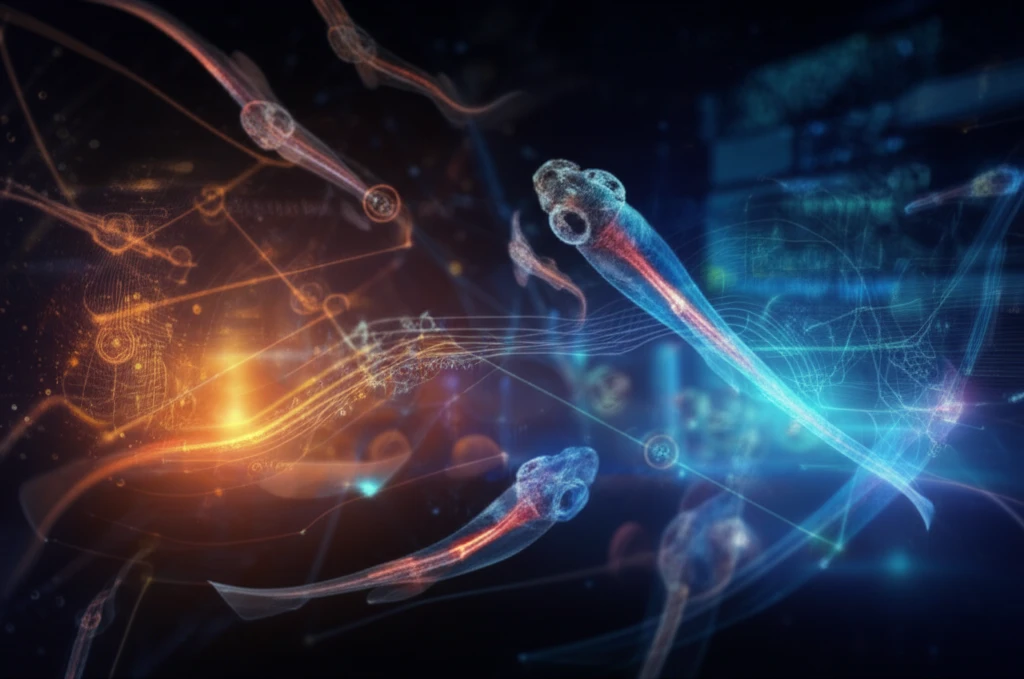
Blood Flow Visualization: A New Dimension in 3D Imaging
"Dual-Illumination Holographic Microscopy Offers High-Speed, Quantitative Insights into Microcirculation"
Visualizing blood flow, especially in the microcirculation, is crucial for understanding various biomedical processes and detecting early signs of diseases. Traditional blood flow imaging (BFI) techniques often require contrast agents, making them invasive. While methods like scanning Doppler imaging exist, they can be time-consuming.
Holography, also known as digital holography (DH), provides a non-invasive alternative. By reconstructing wavefronts, DH captures 3D information effectively. Recent advances combine DH and microscopy with dual illumination, offering detailed 3D images of red blood cells (RBCs) in living organisms, such as zebrafish embryos.
A new study introduces an improved dual-illumination holographic microscopy technique. This method uses two microscope objective lenses at a wider separation angle, enhancing resolution and allowing easier sample manipulation. The technique's effectiveness is demonstrated through experiments on zebrafish larvae, paving the way for live 3D holographic imaging.
Dual-Illumination Holographic Microscopy: How It Works

The core of this innovation lies in its unique setup. The system uses two microscope objective lenses positioned at a 90-degree angle. This wide separation enhances angular rotation and improves z-resolution. The setup also simplifies the displacement of the sample in multiple directions, making it more versatile for live imaging.
- Laser Light Source: A laser diode splits light into two beams.
- Acousto-Optic Modulators (AOMs): These modulate the reference beam.
- Microscope Objectives: Water-based objectives image the sample.
- CCD Camera: Captures the interference pattern created by the beams.
- Holographic Reconstruction: Processes the captured data to create 3D images.
Potential and Future Directions
This new technique addresses limitations of previous methods by providing a less invasive and more efficient way to visualize blood flow in three dimensions. The dual-illumination approach enhances angular rotation and z-resolution, offering a significant improvement over traditional methods.
The study successfully captured moving RBCs and demonstrated the technique's ability to perform phase-shifting reconstruction for both beams simultaneously. This is crucial for implementing live 3D holography.
Future work will focus on identifying the coincidence plane to refine the reconstruction process. The researchers believe that this technique, combined with advanced cleaning algorithms, will further improve z-resolution and extend the angle diversities of 3D reconstruction, potentially reaching a full 360-degree view.
